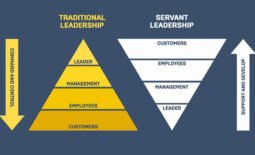Utilizing a Fishbone Diagram for Milestone-Based Planning in Startups
Traditional business plans are dead in startups, replaced by better tools like the Business Model Canvas and Lean Canvas, but that doesn’t mean planning is dead. While much is written about the high failure of startups, the reality is that many more startup ideas never make it beyond the idea phase because founders don’t know how to go from zero to launch. This is where the exercise of planning can facilitate the knowledge needed to launch a new venture.
Milestone-based planning is a strategic approach that prioritizes agility over formality by focusing more on planning than creating a plan. It helps break down a project into smaller, manageable stages, each marked by a significant achievement or a ‘milestone.’ One effective tool to facilitate this process using effectual thinking is the fishbone diagram, also known as the Ishikawa or cause-and-effect diagram.
What is a Fishbone Diagram? A fishbone diagram is a visual tool used for problem-solving and identifying potential causes of a particular issue. It resembles the skeleton of a fish, with a central spine and several branches that categorize causes or factors contributing to the end goal or problem.
Application in Milestone-Based Planning In the context of milestone-based planning, a fishbone diagram can be adapted to map out the necessary steps, dependencies, and potential challenges that might arise while reaching each milestone. Here’s how you can do it:
- Define Your Milestones: Start by identifying the key milestones of your project. These should be significant checkpoints that indicate progress, such as the completion of a phase, achievement of a customer-development target, or development of a product feature.
- Create the Fishbone Structure:
- Central Spine: This represents the timeline of your project. Place the milestones along this spine at intervals that reflect their occurrence during the project lifecycle.
- Branches for Each Milestone: For each milestone, draw branches from the central spine. These branches will represent different aspects such as tasks, resources, risks, and dependencies associated with reaching that milestone.
- Detail the Branches:
- Tasks: List the specific tasks or actions required to achieve each milestone.
- Resources: Identify the human, financial, and material resources needed.
- Risks: Anticipate potential risks or obstacles and how they can be mitigated.
- Dependencies: Note dependencies among tasks or on external factors.
- Collaborative Analysis and Planning: Use the diagram as a collaborative tool. Engage co-founders and advisors in identifying tasks and resources and in brainstorming potential risks and dependencies. This collaborative approach ensures a comprehensive and realistic plan.
- Monitoring and Adjusting: As the project progresses, use the fishbone diagram to monitor progress towards each milestone. Update the diagram to reflect changes or new insights, making it a living document that guides the project’s journey.
Benefits of Using a Fishbone Diagram for Milestone-Based Planning
- Visual Clarity: It provides a clear visual representation of the plan, making it easier to understand and communicate.
- Comprehensive Planning: Helps consider all aspects of each milestone, including resources, budget, risks, and dependencies.
- Collaboration Enhancement: Encourages team involvement and brainstorming.
- Flexibility: Easy to update and adjust as the project evolves.
Milestone-based planning is crucial for the successful launch of a startup. By employing a visual tool like the fishbone diagram in this process, entrepreneurs can ensure a more organized, thorough, and collaborative approach to achieving their startup milestones.







